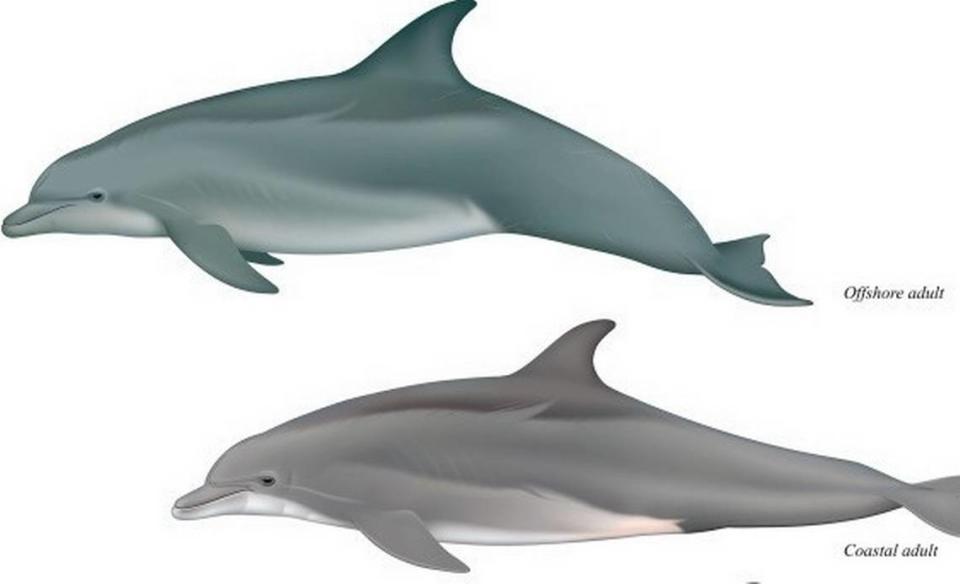New dolphin species discovered along SC coast, study shows. What makes them unique
Scientists determined that bottlenose dolphins found close to the shore off South Carolina and much of the east coast are a different species than those living in deeper water, according to a study published last May.
The new species was dubbed Tamanend’s bottlenose dolphin, scientific name Tursiops erebennus.
Researchers with NOAA and the University of Miami, among others, worked for eight years studying 147 skulls and 43 spines of stranded bottlenose dolphins. Some specimens were found in South Carolina or housed at the South Carolina State Museum in Columbia.
Scientists found that members of the new species are smaller than their offshore common bottlenose counterparts, eat different fish and have spines adapted to navigating the tight spaces of rivers and estuaries.
Tamanend’s bottlenose dolphins, found in shallow water from Florida to New York, are also more closely related to coastal dolphins in the Gulf of Mexico and the Caribbean than their offshore counterparts.

Lauren Rust, executive director of the Lowcountry Marine Mammal Network, said this discovery emphasized the importance of protecting South Carolina’s dolphins. “I think it’s really critical that the community kind of understands how, how unique, how small this population is and really how critical they are.”
The Charleston-based nonprofit collects samples and information on dolphins, whales and seals that wash up on South Carolina shores.
“This research kind of highlights the importance of going out to look at every dead dolphin, as gross as it is, because we’re getting really important data that has turned into a new species,” Rust said.

